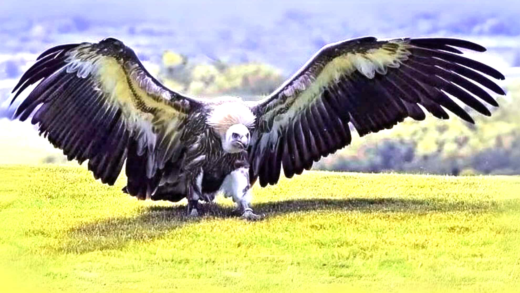Animals exhibit various behaviors before storms, including restlessness and changes in vocalizations. They sense environmental changes through acoustic, olfactory, and vibrational awareness. Scientific studies confirm their predictive abilities, highlighting behavioral observations, physiological changes, and indigenous knowledge as key factors in weather prediction.
Animal Behavior Before Storms
Animal weather prediction is a fascinating subject. Animals exhibit specific behaviors before a storm hits, often sensing environmental changes that humans cannot. These behavioral changes can be quite diverse, depending on the species.
1. Increased Restlessness: Many animals become agitated before a storm. For instance, dogs might bark more, while cats may hide. This restlessness is a signal that something is amiss in their environment.
2. Unusual Vocalizations: Birds, in particular, may change their songs or call patterns. They often become quieter or more frantic, indicating their awareness of an impending storm.
3. Migration and Movement: Some species, such as certain fish and birds, may migrate or move to safer areas before a storm. This instinctual behavior helps them avoid danger.
4. Changes in Feeding Patterns: Animals may alter their feeding habits. For example, squirrels tend to gather more food before bad weather, preparing for a potential scarcity.
5. Physical Reactions: Some animals display physical signs, like trembling or seeking shelter. Elephants have been known to move to higher ground before floods.
Understanding these behaviors can provide insights into animal weather prediction capabilities. While these behaviors may vary, they reflect a deep connection to the natural world that many animals possess. Observing them can enhance our awareness of environmental changes and prepare us for upcoming weather events.
How Animals Sense Environmental Changes
Animals possess an incredible ability to sense environmental changes, which contributes to their weather prediction skills. This ability is crucial for their survival, especially during unpredictable weather events. Various methods enable animals to detect shifts in their surroundings, allowing them to react accordingly.
1. Acoustic Sensitivity: Many animals, including dogs and cats, have heightened hearing capabilities. They can detect changes in sound waves that precede storms. For example, the sound of distant thunder or the rustling of leaves can signal an approaching weather system.
2. Olfactory Cues: Animals have a powerful sense of smell. Certain species, like dogs, can sense changes in atmospheric pressure and humidity through their keen olfactory senses. This ability allows them to detect rain or storms before they arrive.
3. Vibrational Awareness: Some animals, such as insects, can sense vibrations in the ground. This sensitivity helps them detect the movement of air or changes in the environment, which can indicate an approaching storm.
4. Body Language and Behavior: Animals often display changes in behavior that signal environmental shifts. For example, many birds change their flight patterns or flock together as a storm approaches, indicating their awareness of impending weather changes.
5. Biological Rhythms: Many species have internal biological clocks that help them sense seasonal changes. For instance, migratory birds know when to leave for warmer climates based on subtle environmental cues, such as temperature and daylight length.
In summary, animals utilize a variety of methods to sense environmental changes, which enhances their ability to predict weather. Understanding these capabilities not only enriches our knowledge of animal behavior but also highlights the importance of respecting and observing wildlife in our changing environment.
Scientific Studies on Animal Weather Prediction
Animal weather prediction has drawn the attention of scientists for years. Research indicates that certain species can predict weather changes with remarkable accuracy. These studies often focus on the behaviors and physiological responses of animals to environmental shifts.
1. Behavioral Observations: Many studies document specific behaviors exhibited by animals before severe weather events. For instance, a study published in the journal “Animal Behavior” highlights that dogs often display increased anxiety levels before storms, aligning with their heightened sensitivity to changes in atmospheric pressure.
2. Physiological Changes: Research has shown that animals can experience physiological changes in response to weather patterns. For example, a study conducted by the University of California found that certain birds have altered heart rates and stress levels before rainstorms, suggesting they sense changes in humidity and air pressure.
3. Case Studies: Numerous case studies illustrate animals’ predictive capabilities. For instance, elephants have been observed moving to higher ground before floods, showcasing their ability to sense impending danger. Additionally, migratory patterns in birds often shift based on seasonal weather changes, revealing their innate understanding of environmental cues.
4. Indigenous Knowledge: Indigenous communities have long recognized animals as reliable indicators of weather changes. Research indicates that traditional ecological knowledge often includes observations of animal behavior as a means of forecasting weather, validating the reliability of animal predictions.
5. Comparative Studies: Comparisons between animal predictions and meteorological forecasts have been conducted to assess accuracy. A study by the National Oceanic and Atmospheric Administration (NOAA) found that while meteorology relies on complex models, animal predictions are often surprisingly accurate, especially in local contexts.
In conclusion, scientific studies affirm that animals possess unique capabilities to predict weather changes. Their behaviors and physiological responses offer valuable insights into environmental shifts, enhancing our understanding of animal behavior and its implications for weather forecasting.





Comments are closed.